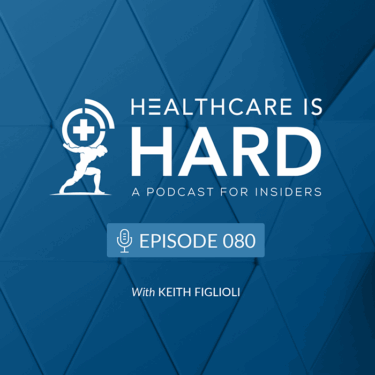
Seth Hain has spent two decades at Epic, watching the electronic health record evolve from digital filing cabinet to care-delivery platform. Now he thinks the entire stack of software is being re-imagined, only this time it isn’t mobile or cloud driving the change, but generative AI.
In a conversation with Keith Figlioli, Hain explains how new tooling, cheaper compute and larger context windows are pushing healthcare toward an “agentic” era, where software can collect context, ask clarifying questions, and tee up next-best actions before the clinician even walks into the room. He argues that the real breakthrough isn’t documentation speed-ups, but the chance to embed a learning health system directly into daily workflows.
Central to that vision is Cosmos—a dataset of 15 billion encounters from more than 250 health systems that is already powering condition-specific growth charts and real-world evidence studies. The next step: piping those insights back to the bedside at scale.
Yet technology alone won’t deliver. Hain and Figlioli dig into:
- A real “health grid” is starting to form. Hain envisions a network that connects life-science companies, health-system clinicians and tech builders so discoveries can move from bench to bedside without today’s data hand-offs and delays. Epic’s role is to lower the technical friction, so researchers can spot patterns, then surface the insight inside everyday workflows. The long-term bet: once the pipes are in place, bespoke therapies (even gene treatments) could be developed and delivered in one coordinated loop rather than siloed phases.
- Agentic AI is rewriting the user interface, not just speeding up notes. Hain argues the shift from cloud/mobile to generative agents is “noticeably different” because large-context models can listen, remember, reason and suggest next steps in real time. That opens the door to smart exam rooms that combine ambient voice, vision and wearables, and to workflows that provide clinicians with a complete picture before they walk in the patient’s room. As UI layers splinter, the possibility of deep insights from longitudinal data is becoming reality, and vendors who overlook this shift will quickly fall behind.
- AI as a Force Multiplier for a Shrinking Workforce. With demand still rising faster than the workforce can grow, Hain sees AI as a supplement, not a head-count replacement: think follow-up calls, patient triage or ambient documentation that frees staff to practice at the top of their license. But he’s clear that hype won’t bend the curve; the industry has to measure quality gains, time saved and patient outcomes before claiming ROI. Governance must evolve in parallel so speed doesn’t outrun safety or equity and incumbents that ignore this shift do so at their peril.
Throughout, Hain balances optimism with realism: the models are improving fast, but value will hinge on measurable outcomes, thoughtful deployment, and collaboration across an industry that often works in silos.
To hear Seth Hain and Keith discuss these topics and more, listen to this episode of Healthcare is Hard: A Podcast for Insiders.
